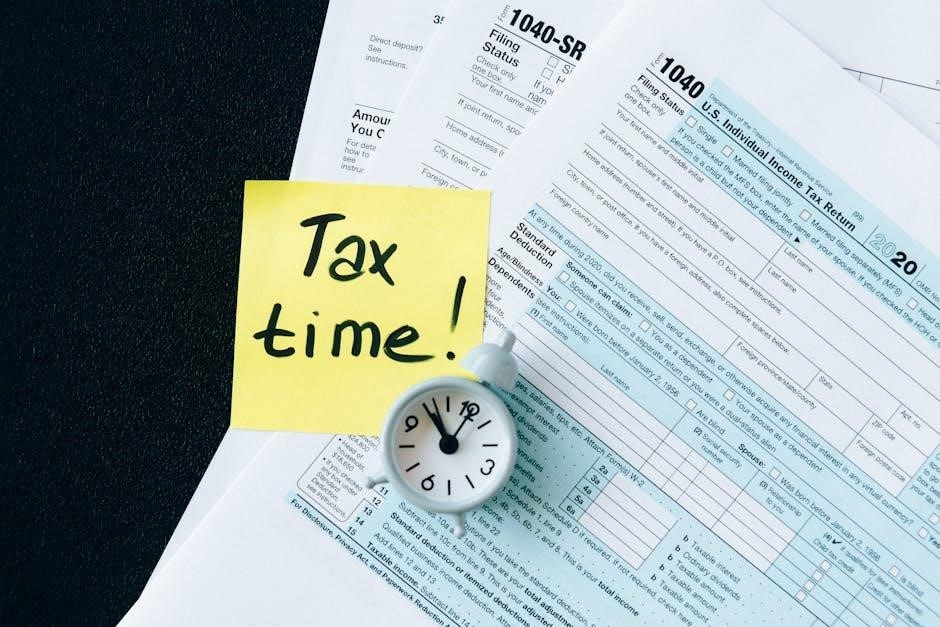Police Report Form PDF: A Comprehensive Guide
A police report form PDF is a standardized document used by law enforcement to record details of incidents; These forms capture crucial information, aiding investigations.
They ensure accurate documentation of events, witness statements, and evidence. A well-structured PDF form streamlines the reporting process for officers.
Understanding Police Report Forms
Police report forms are essential tools for law enforcement, serving as official records of incidents. These forms capture critical details like dates, times, locations, and descriptions of events. Understanding their structure and purpose is vital for both officers and citizens. Police reports provide a standardized way to document crimes, accidents, and other incidents.
They include sections for victim and witness statements, suspect information, and evidence descriptions. The forms also contain officer details, such as name, badge number, and contact information. A comprehensive understanding of these forms ensures accurate and thorough reporting, which is crucial for investigations and legal proceedings.
Furthermore, knowing how to interpret and utilize the information within these reports is beneficial for anyone involved in the justice system. Whether you’re an officer, a victim, or a witness, familiarity with police report forms enhances your ability to navigate the reporting process effectively.
Purpose of a Police Report
The primary purpose of a police report is to document incidents reported to law enforcement. These reports serve as official records, providing detailed accounts of events, evidence, and witness statements. They are crucial for investigations, legal proceedings, and statistical analysis. A well-written police report offers a clear and accurate narrative of what occurred, ensuring that all relevant information is captured.
Police reports also facilitate communication between different law enforcement agencies and other stakeholders in the justice system. They provide a standardized format for sharing information, enabling effective collaboration and coordination. Furthermore, these reports are used for crime analysis, helping to identify trends and patterns that can inform crime prevention strategies.
In addition to their investigative and analytical functions, police reports serve as legal documents that can be used in court. They provide evidence to support prosecutions and can be relied upon by judges and juries in making decisions. Therefore, the accuracy and completeness of a police report are of utmost importance.

Key Elements of a Police Report Form
A comprehensive police report form includes several key elements to ensure thorough documentation. The form typically begins with essential administrative details such as the date, time, and location of the incident. It also includes the reporting officer’s name, badge number, and contact information for verification purposes. These details provide context and establish the report’s authenticity.

The core of the report focuses on the incident description, providing a detailed narrative of what occurred. This section should include specific facts, observations, and statements from involved parties. Witness statements are crucial for corroborating information and providing different perspectives. The form should also include sections for listing all parties involved, including victims, suspects, and witnesses, along with their identifying information.
Additionally, the form should capture details about any evidence collected, including its location and chain of custody. This ensures that the evidence can be properly tracked and used in subsequent investigations or legal proceedings. Finally, the form should include a section for any additional notes or observations that may be relevant to the incident.
Benefits of Using a Police Report Form Template
Utilizing a police report form template offers numerous advantages for law enforcement agencies. Firstly, it ensures standardization in reporting, creating uniformity across all documented incidents. This consistency simplifies data analysis, making it easier to identify trends and patterns in crime. Standardized forms also facilitate better communication between different departments and agencies, as everyone is familiar with the format and content.

Secondly, templates save considerable time and effort. Instead of creating a new report from scratch each time, officers can quickly fill in the relevant information on a pre-designed form. This efficiency allows them to spend more time on active duty and investigations. Moreover, templates reduce the risk of overlooking essential details, as all necessary fields are already included;
Thirdly, modern templates offer customization options to suit specific needs. Features like conditional logic and integrations with other systems enhance functionality. Electronic signatures can be collected to verify authenticity, and data can be easily exported for analysis or storage. These dynamic features improve the overall accuracy and efficiency of the reporting process, leading to better outcomes in investigations and crime prevention.
Standardization and Comprehensive Reporting
One of the paramount benefits of employing a police report form template lies in its ability to foster standardization. By providing a structured framework, these templates ensure that all necessary data points are consistently captured across every incident report. This uniformity is crucial for accurate data analysis and comparison, enabling law enforcement agencies to identify trends, patterns, and potential hotspots of criminal activity.
Moreover, standardization promotes effective communication and collaboration among different departments and agencies. When everyone adheres to the same reporting format, information can be easily shared and understood, regardless of the officer or jurisdiction involved. This interoperability is particularly vital in multi-agency investigations or when dealing with cross-border crimes;
Beyond standardization, police report form templates also facilitate comprehensive reporting. These templates typically include sections for detailed descriptions of the incident, witness statements, evidence collected, and any other relevant information. By prompting officers to gather and document all pertinent details, templates minimize the risk of overlooking critical pieces of evidence or neglecting important aspects of the investigation. This thoroughness ensures that each report provides a complete and accurate account of the incident, which is essential for successful prosecution and justice.
Time and Effort Savings
Police report form templates provide considerable time and effort savings for law enforcement personnel. Instead of creating reports from scratch each time, officers can use pre-designed templates. This reduces the time spent on formatting and structuring the document.
Templates include pre-defined fields and sections. These guide officers to input information efficiently. The standardized format ensures no critical details are missed. This leads to more comprehensive and accurate reports.
The use of digital templates, such as PDF forms, further enhances efficiency. Officers can fill out these forms electronically. Digital forms reduce paperwork and the need for manual data entry. They allow for quick submission and storage.
Features like drop-down menus and checkboxes simplify the input process. Officers can select options quickly. This minimizes typing and potential errors. Digital templates can also be integrated with databases. This enables automatic population of information.
The reduced administrative burden allows officers to focus on core duties. They can spend more time on patrol and community engagement. Ultimately, police report form templates improve productivity. They ensure effective use of resources.
Customization and Dynamic Features
Police report form templates offer significant customization and dynamic features to enhance their utility. These templates can be tailored to fit the specific needs of different law enforcement agencies. Customization allows for the inclusion of fields and sections relevant to particular types of incidents.
Dynamic features, such as conditional logic, make the forms more intelligent. Conditional logic enables certain fields to appear or disappear based on previous entries. This ensures that officers only see the fields relevant to the situation at hand.
Integration with other systems, like databases and mapping software, further enhances the dynamic capabilities. Information can be automatically populated from existing records, reducing manual entry. Mapping features can automatically capture the location of the incident.
The ability to add electronic signatures ensures authenticity and accountability. E-signatures streamline the approval process and reduce paperwork. Templates can also be designed to support multimedia attachments. This allows officers to include photos, videos, and audio recordings as evidence.
Customization extends to the visual aspects of the form, such as branding and layout. Agencies can incorporate their logos and color schemes. This improves the professional appearance of the reports. The combination of customization and dynamic features makes police report form templates a powerful tool for modern law enforcement.
Where to Find Police Report Form Templates

Finding the right police report form template is essential for efficient and accurate incident documentation. Numerous resources offer a variety of templates to suit different needs. Online marketplaces such as Smartdraw and Etsy provide diverse options. These platforms often feature templates designed by professionals.
Law enforcement agencies can also find templates on websites specializing in legal forms. These sites typically offer templates tailored to specific jurisdictions. Many software providers, like Jotform, offer customizable police report form templates. These templates often include dynamic features and integration capabilities.
Government websites and law enforcement resource centers provide templates that comply with local regulations. These templates are often free to download and use. Open-source platforms offer community-developed templates.
When choosing a template, consider the specific requirements of your agency or organization. Look for templates that include all necessary fields and sections; Ensure that the template is compatible with your existing systems and software.
Review the template for accuracy and compliance with legal standards. Customization options should be available to tailor the template to your needs. Selecting the right template can significantly improve the efficiency and accuracy of police report documentation.
Filling Out a Police Report Form: Essential Information
Completing a police report form accurately is crucial for effective law enforcement and investigative processes. Begin by providing the date, time, and precise location of the incident. This foundational information establishes the context of the report. Include the names, addresses, and contact details of all involved parties.
Accurately document the roles of victims, witnesses, and suspects, if any. Describe the incident in a clear, concise, and factual manner. Avoid making assumptions or including personal opinions. Focus on observable facts and direct quotes from witnesses. Detail any injuries, damages, or losses incurred as a result of the incident.
Include a comprehensive description of any evidence collected at the scene. Specify the type, location, and chain of custody for each item. If applicable, provide statements from witnesses, ensuring their names and contact information are recorded. Identify any contributing factors, such as environmental conditions or pre-existing circumstances.
Record the names, badge numbers, and contact information of the officers involved. Ensure the report is signed and dated by the reporting officer. Review the completed form for accuracy and completeness before submission. Adhering to these guidelines ensures a thorough and reliable police report.
Submitting a Police Report Form: Options and Procedures
Once a police report form is completed, it’s essential to submit it through the appropriate channels. Depending on the jurisdiction and the nature of the incident, several options may be available. One common method is to submit the form in person at the local police station. This allows for immediate confirmation of receipt and the opportunity to ask any clarifying questions.
Another option is to submit the form electronically, if the police department offers this service. Electronic submission typically involves uploading the completed PDF form through a secure online portal. It’s important to ensure the digital form is properly filled out and all required fields are completed before submitting. Some departments may also accept reports via mail, although this method may have a longer processing time.
In certain cases, particularly for urgent or serious incidents, it may be necessary to call the police directly and have an officer come to the scene. The officer will then complete the report and submit it through the department’s internal procedures. Regardless of the submission method, it’s advisable to keep a copy of the completed form for your records.
Follow up with the police department to confirm the report has been received and to inquire about any further steps or information needed. Proper submission ensures the incident is officially documented and can be used for investigations and legal proceedings.
